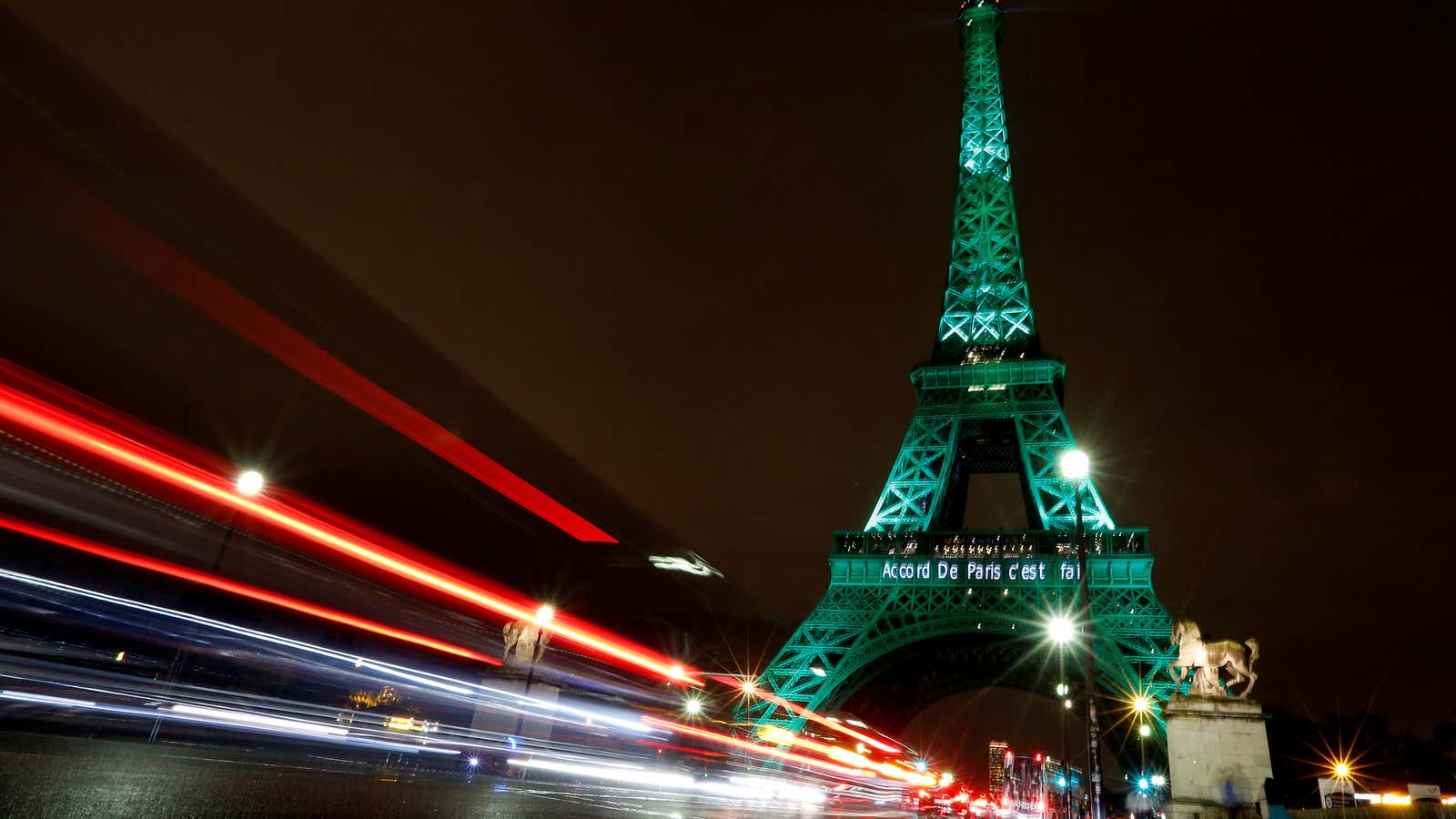US president-elect Donald Trump says he is not a great believer in man-made climate change and has vowed to “cancel” the Paris climate agreement (which he calls “bad for US business“).
But climate scientists, watching a world heating up far faster than expected, have pinned their hopes for action to save the planet on the agreement. Hundreds of members of the National Academy of Sciences, the nation’s most prestigious scientific body, published an open letter to “the Republican nominee for President” arguing that withdrawing from the pact carried “severe and long-lasting consequences” for the future of human life on Earth. The globe is on a trajectory for catastrophic warming in the coming decades, and the US is the second largest contributor of greenhouse emissions, following only China.
Trump will be moving into the White House in January 2017. Does that mean he can make good on his promise to negate the agreement reached at COP 21 last year?
In a word, no.
But Trump can try to cripple the 193-country agreement by pulling the US out of the commitment it made in Paris. That could doom any prospects the COP 21 plan had of denting global emissions. Trump’s main objection to the treaty—that it allows “foreign bureaucrats control over how much energy we use”—is false, according to one of its US lead negotiators Todd Stern, since no one country dictates another’s emission plans.
Stern has also said a decision to pull out of the plan is “stunningly misguided,” since it’s the world’s primary accord to coordinate global action on climate—a matter not of ideology but of the survival of humankind.
That doesn’t mean Trump won’t do it. There are three avenues, according to Climate Central, that the president-elect could take to scuttle the agreement:
First, Trump can formally withdraw the US from the agreement within a year after it takes effect by abandoning a 1992 climate treaty. That could happen even without Congressional approval. This is the most aggressive option, and likely to provoke fierce international condemnation and domestic resistance.
The second option is delaying until the end of his first term, and then removing the US under an existing provision in the pact. After joining the Paris pact, countries must wait at least three years before triggering the one-year withdrawal period, followed by an additional one-year wait. The Obama Administration filed paperwork with the UN in September indicating the US will join the Paris agreement.
The final—and perhaps most likely—scenario is simply making no effort to enforce the rules or incentives necessary to reduce pollution in the US. For example, Trump has said he would like to eliminate the US Environmental Protection Agency, the agency responsible for regulating greenhouse gas pollution in the US.
It’s still too early to say what, if any action, the Trump administration will take. But since foreign policy, and much of the US energy strategy, resides in power of the executive branch, the future of our climate may be decided by the next resident of the White House.
